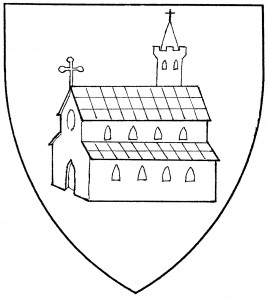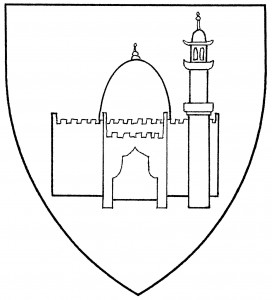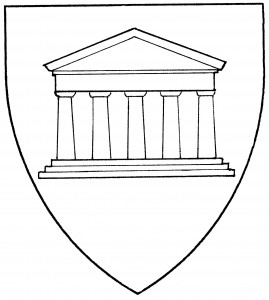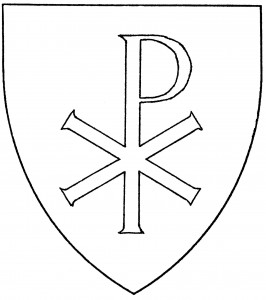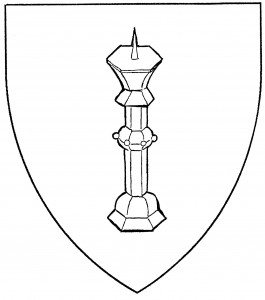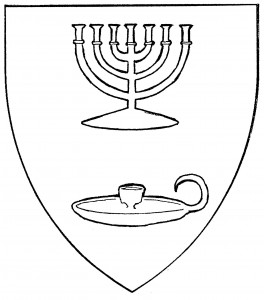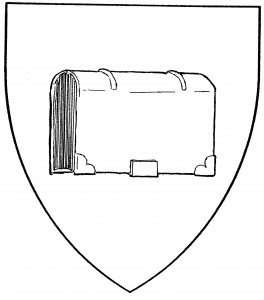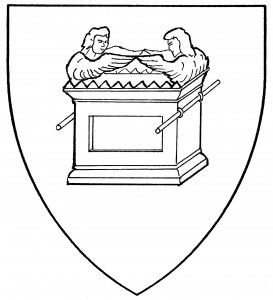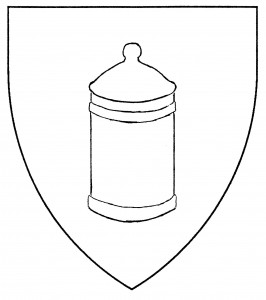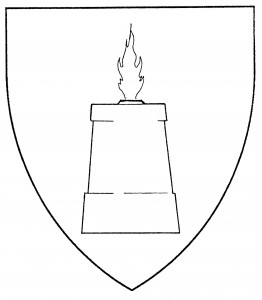A church is an edifice wherein organized worship services are held. It’s a period charge, found in the canting arms (Italian chiesa) of dala Giexia, mid-15th C. [Triv 161]. There is wide variation in the depiction of churches, as with all edifices in heraldry, but most seem to be drawn with steeples (or bell towers), with the length of the church fesswise.
Related to the church is the “mosque”, dedicated to Moslem worship. It’s characterized by its domed prayer hall and at least one minaret (which, for heraldic purposes, may be said to be its defining feature). Though no examples have been found in medieval armory, the mosque is accepted for Society use.
Finally, there is the “temple”, more fully blazoned a “Grecian temple”: a pillared edifice with steps and a triangular roof, rather like a simplified rendering of the Parthenon. It too, though yet unattested in medieval armory, is accepted for Society use.
Piers Blackmonster bears: Per chevron argent and sable, two griffins sejant respectant and a church counterchanged.
‘Afra’ bint Tamir al-Sahrahwayyiah bears: Vert, a fess sable fimbriated surmounted by a domed mosque of one minaret, in canton a decrescent Or.
Arenvald Kief av Kiersted bears as a badge: On a temple Or a Thor’s hammer gules.
